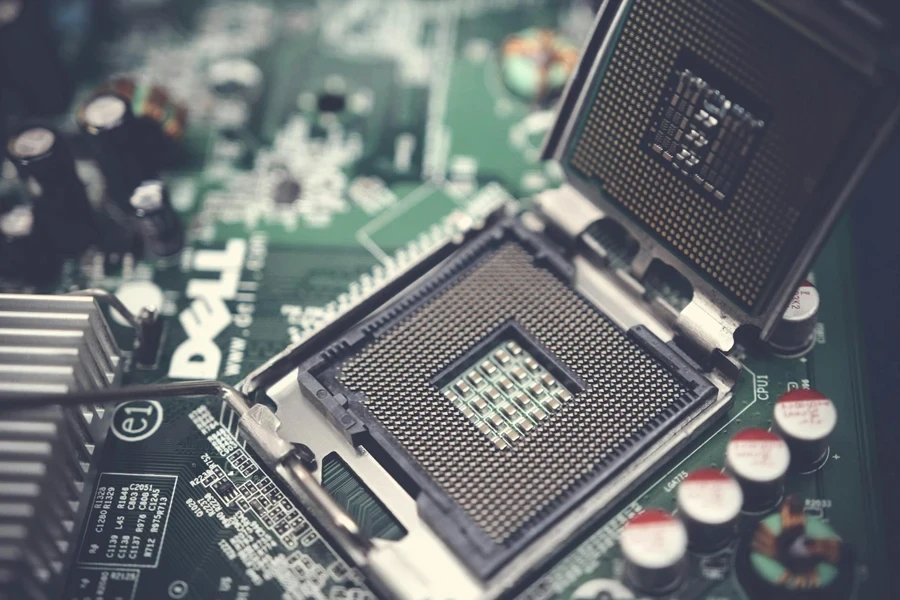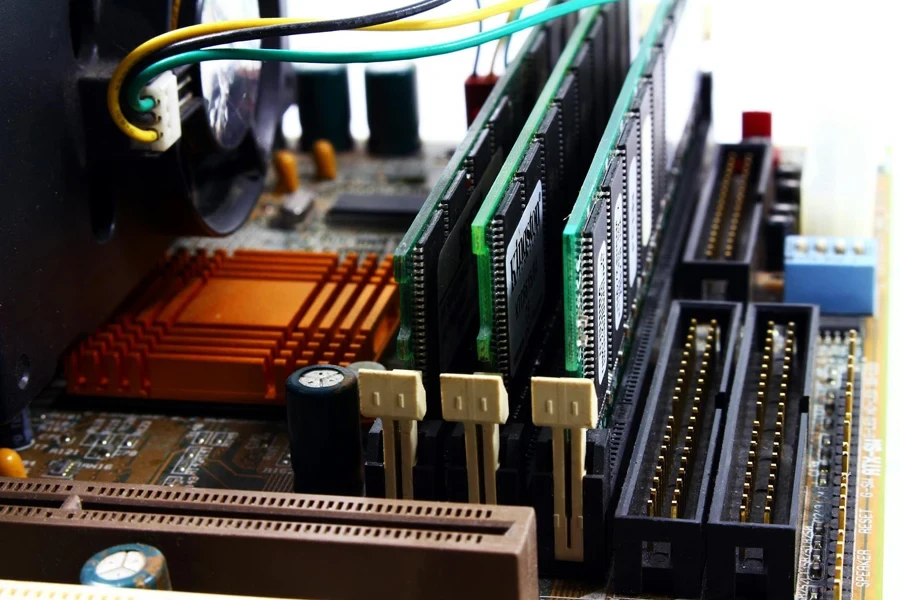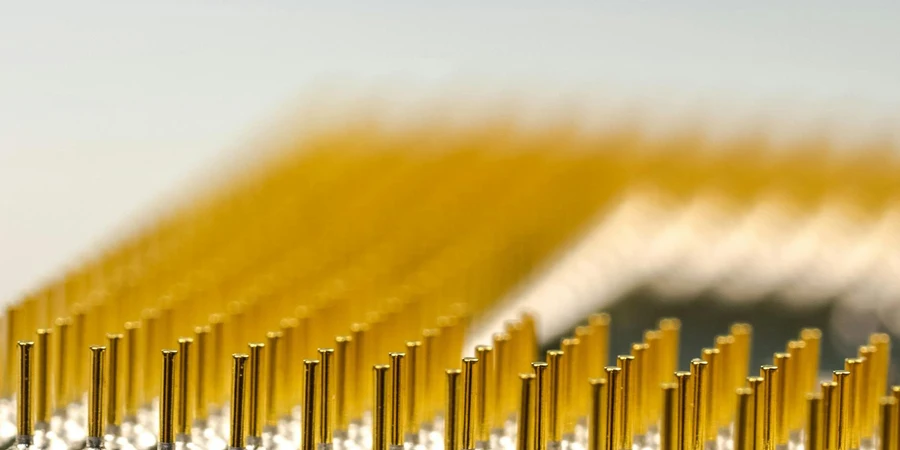Table of Contents
● Introduction
● Market overview
● Types and their features
● Things to consider when selecting products
● Conclusion
Introduction
In the digital age, Central Processing Units (CPUs) stand as the backbone of technology, driving the operational efficiency of everything from smartphones to expansive data centers. Their critical role in data centers, specifically, is to handle vast amounts of data processing required for cloud computing, big data analytics, and artificial intelligence applications. As the demand for faster and more efficient data processing escalates, the evolution of CPU technology has become pivotal for businesses aiming to enhance their data handling capabilities. With market dynamics shifting rapidly towards specialized, multi-core processors that promise significant boosts in performance and energy efficiency, understanding these technologies is essential for any entity reliant on robust data center operations. The continuous advancements in CPU design not only reflect the growing complexities of user demands but also underscore the importance of selecting the right processors to support future-ready data centers.
Market overview

Current market and projected growth
The data center CPU market is currently valued at approximately US$ 10.92 billion and is projected to expand to US$ 19.55 billion by 2033. This growth trajectory represents a steady compound annual growth rate (CAGR) of 6%. This expansion is largely driven by the burgeoning demand for technologies such as cloud computing, artificial intelligence (AI), and big data analytics. As businesses increasingly migrate their operations to the cloud and leverage data-intensive applications to drive decision-making and innovation, the demand for powerful computing capabilities is escalating.
Key market trends
Key market trends further shaping the landscape include the specialization of CPUs to handle specific AI and machine learning workloads. This trend is manifested in the development of processors that are not only faster but also capable of managing the complex computations required by AI applications more efficiently. Additionally, the rise of multi-core processors is noteworthy, as these facilitate more efficient processing of large datasets, enhancing performance and energy efficiency in data centers. The shift towards multi-core architectures indicates a significant evolution in CPU design, aiming to meet the modern demands of high-speed, high-efficiency computing environments.
These market dynamics underscore a rapid technological advancement within the industry, reflecting the critical need for high-performance CPUs that can support the increasing computational demands of modern enterprise applications. As the digital economy continues to grow, the role of advanced CPUs in enabling efficient, scalable, and cost-effective data center operations becomes ever more crucial.
Types and their features

Comparison of CPU types
The landscape of CPUs encompasses a diverse array of types each tailored to distinct computing environments: mobile processors, desktop processors, high-end desktop processors, and server processors. Mobile processors, designed for laptops and other portable devices, prioritize power efficiency to extend battery life while providing adequate performance for everyday tasks. Desktop processors, on the other hand, leverage greater power capacity to deliver higher performance, making them ideal for general computing and gaming. High-end desktop processors push the limits of performance with additional features geared towards enthusiasts and professional creators, supporting more intense computing tasks like video editing and software development.
Server processors are built for reliability and high-performance tasks, equipped to handle the rigorous demands of server environments, such as large-scale data processing and complex computations required by enterprise-level applications. These processors are typically designed with multiple cores to manage simultaneous processes effectively, enhancing overall system efficiency and throughput. According to the information provided, server CPUs might integrate anywhere from 8 to 64 cores, reflecting a significant focus on multitasking and parallel processing capabilities.
Analysis of core configurations
Delving deeper into core configurations, the spectrum ranges from single-core to deca-core setups. Single-core CPUs, which were once standard, now mostly serve low-demand applications due to their limitations in handling multiple processes simultaneously. In contrast, multi-core processors, such as dual-core, quad-core, hexa-core, and octa-core, support a more fluid execution of multiple tasks, reducing lag and improving user experience. Deca-core processors, which are less common, offer even greater prowess in multitasking environments, which is particularly beneficial in specialized high-performance workstations and servers.
Specific product lines
Focusing on major manufacturers like Intel and AMD, each offers distinct product lines designed to meet varying user needs. Intel’s Core series, including the i3, i5, i7, and i9 models, spans from basic dual-core processors to advanced multi-core configurations that support hyper-threading for even greater efficiency. AMD’s Ryzen series, from the Ryzen 3 to the Ryzen 9, mirrors this diversity, offering options from budget-friendly quad-cores to premium 16-core models ideal for gaming and professional tasks. Both Intel and AMD continue to innovate with each generation, improving chip performance, energy efficiency, and integrated graphics capabilities.
Things to consider when selecting products

When selecting CPUs for various applications, several critical factors need to be considered to ensure optimal performance and compatibility with existing systems.
Core count and computing needs
The core count of a CPU is one of the most important factors to consider, as it directly affects the ability to handle multiple tasks simultaneously. For basic computing tasks, a dual-core or quad-core processor may suffice, but for more intensive applications like video editing, 3D rendering, or scientific computations, a higher core count, such as eight cores or more, is advantageous. High-core-count CPUs, like the AMD Ryzen 9 and Intel i9 series, which can feature up to 16 cores, offer advanced multitasking capabilities, allowing professionals to run complex and demanding software efficiently.
Cache size
Cache size plays a significant role in a CPU’s performance as it determines how much data the CPU can store temporarily for quick access. Larger cache sizes allow for faster retrieval of frequently used data, significantly speeding up processing times and overall system responsiveness. For instance, higher-end desktop processors often come with more substantial cache sizes, sometimes up to 20 MB or more, which is crucial for performance-intensive tasks.
Socket compatibility
Socket compatibility is crucial when building a new system or upgrading an existing one. The CPU must be compatible with the motherboard’s socket type. For example, modern Intel processors might use LGA 1200 sockets, while AMD processors might use the AM4 socket. Ensuring that the CPU and motherboard are compatible is essential for a successful build or upgrade, as it affects both the physical fit and the ability of the motherboard to communicate with the CPU.
Thermal design power (TDP)
Thermal design power indicates the cooling performance required to maintain optimal operating temperatures. CPUs with higher TDP ratings usually generate more heat, necessitating more robust cooling solutions. For example, high-performance CPUs used in gaming and servers might have TDPs ranging from 95 to 280 watts, requiring advanced cooling mechanisms like good quality air coolers or liquid cooling systems to prevent overheating that can lead to decreased performance or hardware damage.
Role of integrated graphics
CPUs with integrated graphics are sufficient for everyday tasks like web browsing, video streaming, and simple graphical applications; however, for gaming, video editing, and 3D design, a separate GPU is recommended. Integrated graphics processors (IGPs) typically share resources with the CPU, which can limit their performance compared to dedicated graphics cards. High-end CPUs from the Intel Core and AMD Ryzen product lines often feature integrated graphics capable of basic functions, but professional users will benefit from the additional power of dedicated GPUs, which provide better performance and additional features necessary for graphic-intensive applications.
Conclusion

In conclusion, the selection of the right CPU is crucial for ensuring optimal performance tailored to specific business needs and operational demands. From understanding the significant market growth projected for data center CPUs, which is driven by the escalating requirements for cloud computing and AI, to analyzing various CPU types and their features, it is clear that aligning CPU specifications with business objectives is imperative. Considering factors such as core count, cache size, socket compatibility, thermal design power, and the need for integrated versus dedicated graphics can significantly impact system efficiency and cost-effectiveness. By carefully selecting CPUs that match their specific applications, businesses can enhance their technological infrastructure to meet current and future demands effectively.




